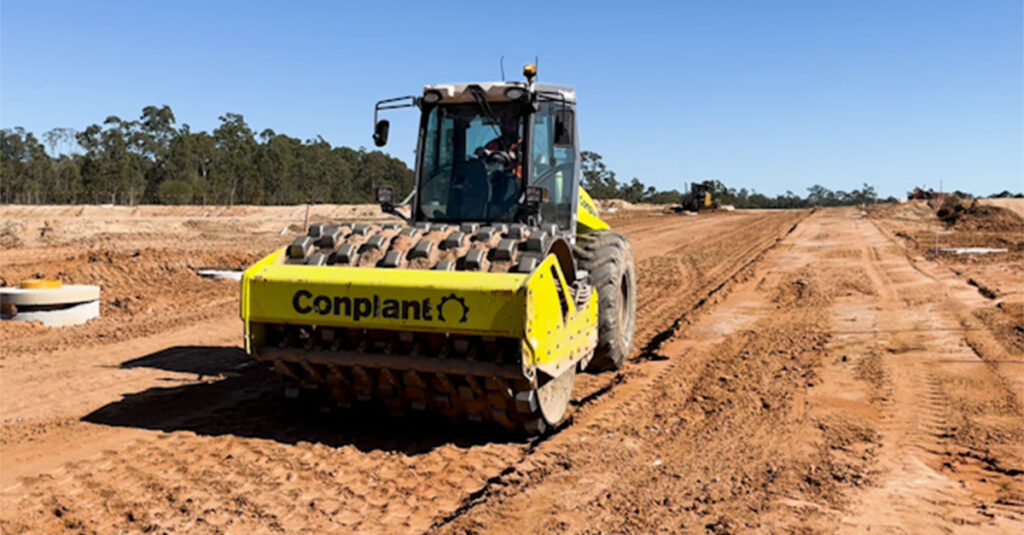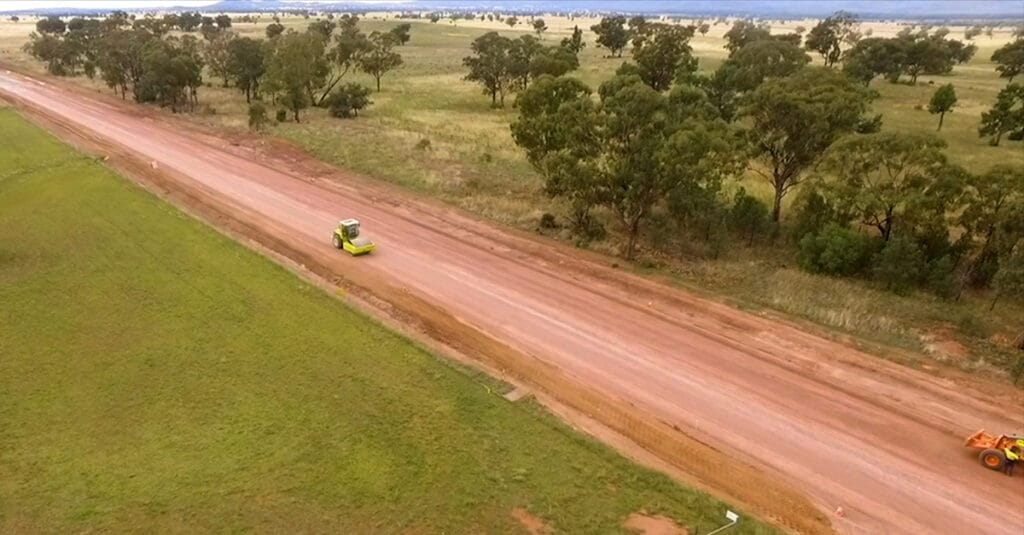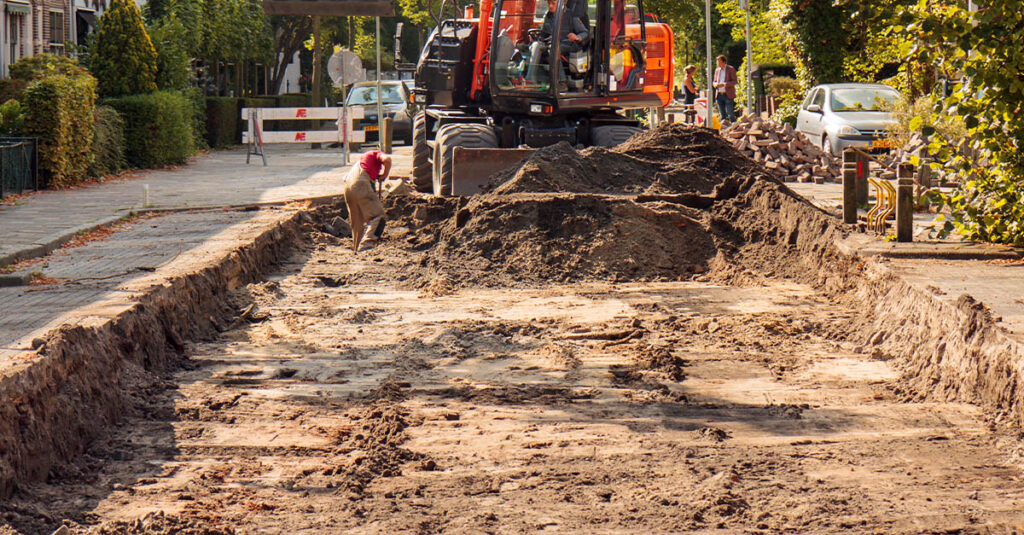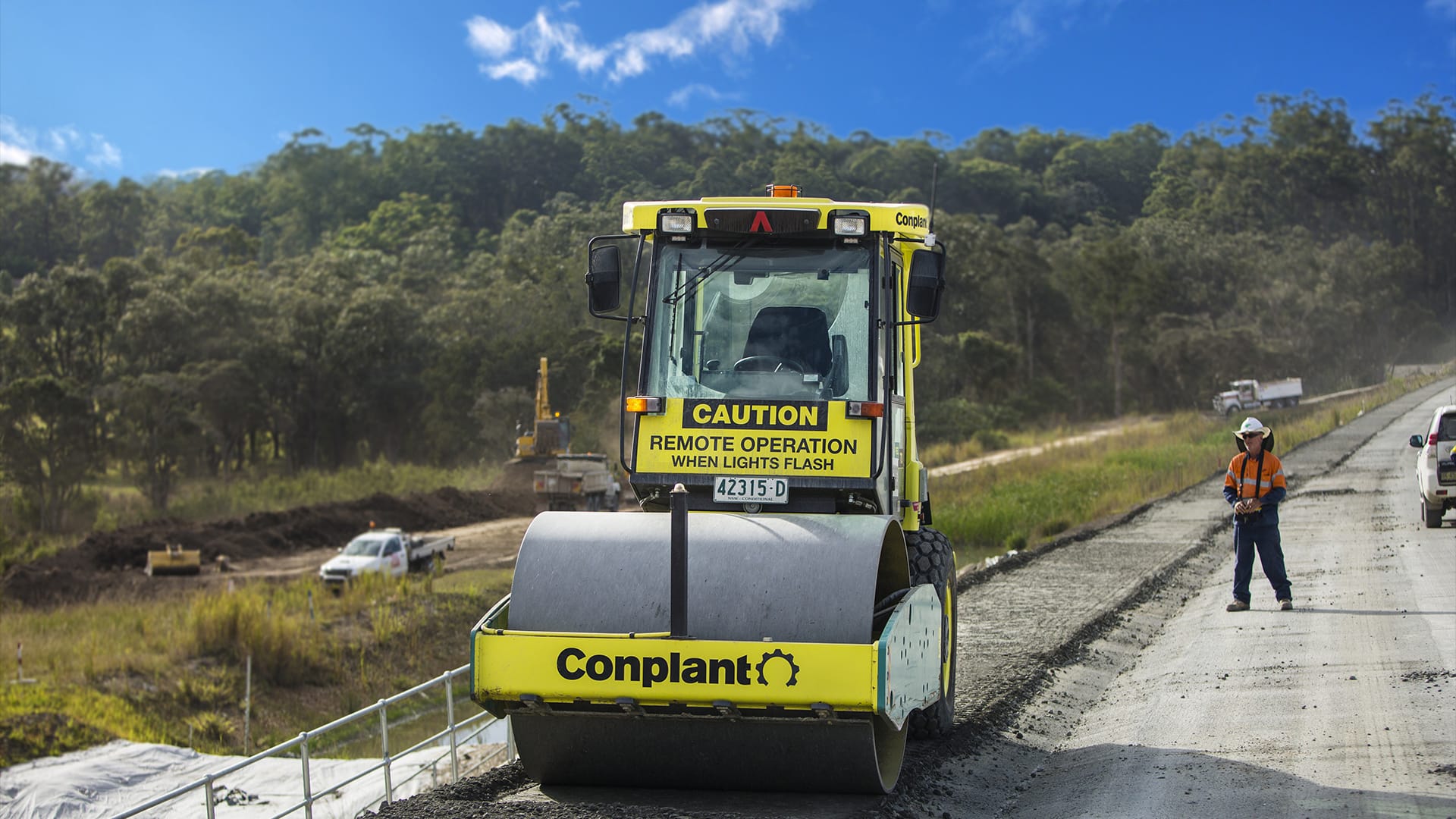What is Soil Compaction in Construction?
Soil compaction is a crucial process in construction to stabilise base materials, ensuring the longevity of projects such as building foundations, roads, airports, railway embankments, bridges and more.
This article delves into the role of compaction, including best practice and use cases, as well as introducing the common equipment involved.
What is soil compaction?
Soil compaction is the process of compressing soil particles to stabilise ground in preparation for construction and reduce the risk of erosion. While compaction methods vary depending on the soil type (e.g. clay versus sand) and conditions (e.g. moisture content and slope), the core principle remains the same: eliminating voids between loose particles to strengthen the soil.
Compacted soil therefore boasts greater density, creating enhanced load-bearing capacity, plus reduced water seepage and swelling.
Why is soil compaction needed in construction?
Soil compaction is used in civil construction to:
- Improve load-bearing capacity. Compaction significantly increases the soil’s ability to support heavier loads. This is crucial for projects such as building foundations, road construction, and dam creation.
- Reduce settlement and shrinkage. Compaction minimises soil volume changes caused by shrinking or swelling. Advanced systems like the Völkel intelligent compaction system can help achieve this with absolute precision.
- Control permeability. Compacted soil helps control water drainage, minimising the risk of flooding and erosion.
Essentially, compaction is crucial for the safety and longevity of construction work, greatly reducing the cost of ongoing repairs and maintenance.
Need a hand with compaction equipment servicing and maintenance? We’ve got you covered.
How does soil compaction work?
Effective soil compaction in construction takes several factors into account – including the type of soil, its moisture content, and the machinery used, as well as budgets and lead time for the rest of the project.
Here are some of the best practices in soil compaction:
Soil assessment
The first and probably most important step is conducting a thorough soil assessment. You want to understand the physical properties of the soil, such as grain size distribution, shape, and specific gravity. These factors all strongly influence how well the soil will compact.
Optimum moisture content
The soil’s moisture content also plays a significant role. The ‘Proctor Test’ or ‘Modified Proctor Test’ are typically performed to identify the ideal moisture content for maximum density when compacted. Achieving this optimum moisture level ensures that the soil compacts effectively, limiting water infiltration and ground expansion.
Layered compaction
Rather than compacting the entire volume of soil in one go, it’s advisable to carry out the compaction in layers. These layers usually range in thickness from 15-60cm. This approach ensures compaction is thorough and uniform throughout the soil mass, thereby enhancing the structural integrity.
Use of appropriate equipment
Last, but not least, you want to select the right machinery for the job. Different soil types and construction projects require varying compaction equipment. Whether it’s a vibratory roller for road construction or a plate compactor for building foundations, suitable equipment ensures effective compaction.
Even once you’ve settled on the type of roller best suited to the soil, other factors like site access may come into play – for example, if your site has limited space, you’ll likely need to choose a roller small and manoeuvrable enough to get in and out safely.
Need a hand finding the right equipment? Read our blog on choosing the right compaction roller.

Soil compaction methods and machinery
Soil compaction is employed in a wide array of civil construction projects, from road construction and building foundations to railway embankments, earth dams, and airport runways. Each application may require different compaction methods and machinery.
Road construction
Vibratory rollers, also known as drum rollers, are commonly used for road construction. Their vibrating mechanism enhances the compaction force, making them ideal for compacting granular soils over large areas.
Building foundations
Plate compactors are often used for compacting the soil around building foundations. Suitable for cohesive soils, they apply force through a vibrating plate to eliminate air pockets and rearrange soil particles.
Trenches and confined spaces
For smaller, hard-to-reach areas such as trenches, rammers are ideal. These tools deliver high-impact compaction and are most effective on cohesive soil types.
Large-scale projects
Tamping rollers or padfoot compactors are often the go-to choices for more expansive projects like airport runway construction or land reclamation. They offer high compaction performance and are capable of compacting a wide variety of soil types.
Need a refresher on soil compaction methods for your next project? Check out our Simple Guide to Compaction.

Soil compaction for residential construction
Typically, in residential construction, lighter equipment like oscillating smooth drum roller and plate compactors are used to ensure the soil can support the structure’s weight effectively.
This process is crucial, especially for single-family homes, townhouses, or low-rise apartment buildings. The goal is to minimise water infiltration and ground expansion, to reduce the risk of structural problems such as sinking or tilting over time. A well-compacted residential site also helps prevent water pooling and soil erosion in gardens and driveways.
Soil compaction for commercial construction
Commercial construction involves larger scale projects such as skyscrapers, industrial complexes, and shopping malls with heavier loads. This requires more robust machinery like vibratory rollers, padfoot compactors, double-drum rollers and multi-tyre rollers.
The compaction process needs to be even more rigorous to accommodate the additional stresses and strains that commercial buildings bring. For example, carparks and loading areas require soil that can bear the weight of numerous vehicles without deforming.

Key takeaways
Whether you’re laying the foundation for a small home or a large-scale industrial complex, soil compaction is an essential process in construction. It lays the groundwork — quite literally — for the stability, longevity, and overall success of a building project.
At its core, soil compaction serves to stabilise and strengthen base materials, enhancing its ability to bear loads and minimise water-related damage. While the process can be intricate, involving varying methods and machinery, the core principles remain universal.
The key to successful soil compaction lies in understanding the specific soil characteristics, utilising the correct compaction equipment, and adhering to the best practices of the compaction process.
At Conplant, we’re committed to helping you understand these complexities with no-nonsense advice, while providing Australia’s largest fleet of compaction rollers to choose from.
Make your next project a success from the ground up. Give us a call on 1300 166 166 or get a free online quote now.



